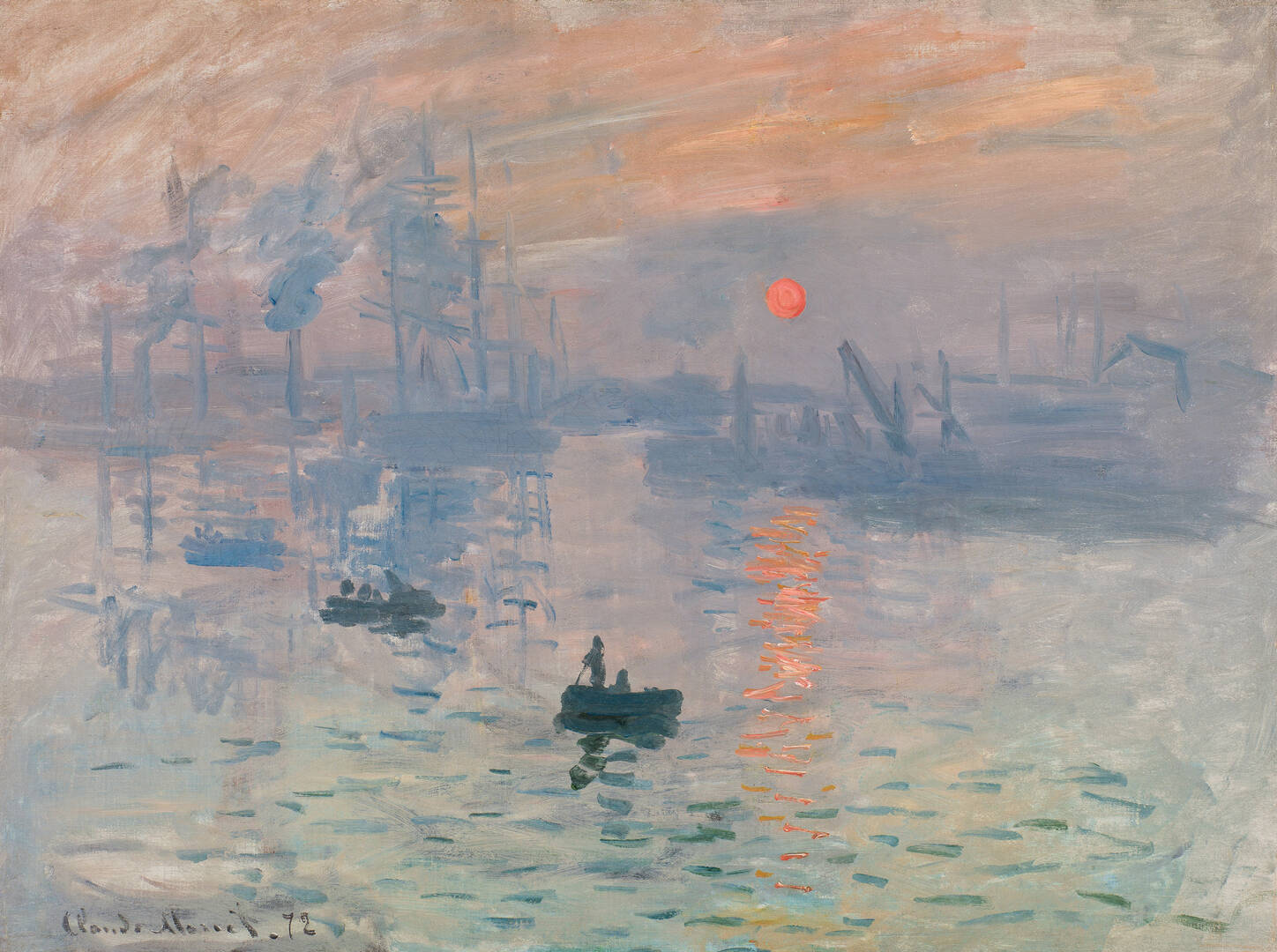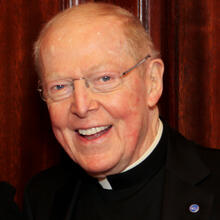On April 15, 1874, an exhibition organized by 31 artists who had created themselves as the Société Anonyme des Artistes Peintres, Sculpteurs, Graveurs, etc. (in effect, an incorporated business) opened in Paris in the studio of the renowned photographer Félix Nadar. It showed some 200 works that departed decisively from the academic style then prevalent in France.
“Finally!,” wrote François Cajat in Le Patriote Français, “there were thirty artists who had enough initiative and audacity to form a company and do their own business, like ordinary mortals.” It was the birth of what came to be known as Impressionism, a title taken (mockingly, in fact) from a painting of sunrise in the harbor of Le Havre by one of the company, the great Claude Monet.
The show was up for a month, and had some 3,500 visitors. But two weeks later, on May 1, a different exhibit, the state-sponsored Salon, opened at the Palais de l'Industrie. With 3,701 works by over 2,000 artists shown over two months, the Salon drew 500,000 visitors. It was the talk of the town, profitable and where the most ambitious painters (including Edouard Manet) angled to be shown. In 1874, the Medal of Honor was awarded to one of the paintings featured in the Salon, Jean-Léon Gerôme’s “L’Eminence Grise,” a strikingly designed painting of Friar François Leclerc du Tremblay, the influential aide of Cardinal Richelieu in 17th-century France.
Now, 150 years after those two exhibitions, two dazzling shows have been mounted. The first was at the Musée d'Orsay in Paris, titled “Paris 1874: Inventing Impressionism,” shown from March 26 to July 14. The second is currently at the National Gallery of Art in Washington: “Paris 1874: The Impressionist Moment” opened on Sept. 8, 2024, and will be up until Jan. 19, 2025. Both exhibits are compelling, even historic, having gathered 130 of the works originally presented in the 1874 Impressionist show and some 45 at the Salon.
The Musée d'Orsay had a curatorial coup in hanging, just outside its exhibition proper, two commanding (and enormous) paintings by Gustave Courbet, “A Burial at Ornans” (1849-50) and “The Artist in His Studio” (1854-55), works that exemplified that great artist’s contribution to Realism. In the following four rooms of the show, on burnt-orange walls, came fabled works such as Auguste Renoir’s “The Theater Box” (1874) hung cater-corner to one of Edgar Degas’s “Dancers”; Paul Cézanne’s “A Modern Olympia” (1873-74), actually a brothel scene, hung scandalously next to Berthe Morisot’s “The Crib” (1872); Claude Monet’s beloved “Poppies” (1873) and Auguste Louis Marie Ottin’s “Bust of Ingres” (1874), the only sculpture in the show. There was also a fascinating video of how the show appeared at Felix Nadar’s studio.

Only in the fifth room did you experience, startlingly, a strong collection of 45 pieces from the Salon of that year. Here the full drama of the Franco-Prussian War (1870-71), which left much of Paris in ruins, and then the ravages of the Commune in 1871, which ushered in the Third Republic, is shown in battle scenes, photographs and etchings. (The room was called “Paris Between Ruins and Renovation.”) Art was a way for France to reclaim its glory.
The striking difference between the shows in Paris and Washington is that the National Gallery of Art presented works by Impressionist and Salon painters from the very first gallery together rather than serially. Already in the second large gallery, for example, are two large battle scenes from the Salon: Edouard Detaille’s “Charge of the 9th Regiment” (1874) and August Lancon’s “Dead in Line” (1873), a dramatic interpretation of the battle of Bazeilles in 1870. Here too was a bronze sculpture by Antonin Mercie, “Gloria Victis,” depicting a fallen soldier held aloft by an angel.
Galleries follow presenting examples of how history painting was prized at the Salon: Lawrence Alma-Tadema’s “The Death of the Pharaoh’s First-Born Son” (1872), for example, and the paradigmatic Salon artist William Bouguereau’s “Homer and His Guide” (1874). A gallery on modern life in public spaces again shows Renoir’s beguiling “The Theater Box” (1874) along with Degas’ dancers, and a wall boasting interpretations by both Impressionists and the Salon of “la Parisienne” (who is sometimes clearly a courtesan but elsewhere a young woman in the wildly popular blue of the time).
As in Paris, a treasure of the National Gallery, Manet’s “The Railway,” with its impassive matron and little girl at the Gare Saint Lazare, is given a wall of its own. (Manet, in fact, never exhibited with the Impressionists.) A fabulous gallery on domestic spaces in modern life couples Jules Bastien-Lepage’s “Portrait of the Artist’s Grandfather” (1874) and Adolphe Félix Cals’s “The Old Fisherman” (1874), the former shown at the Salon, the latter with the Impressionists—but either easily at home in the other show. That gallery is centered on Claude Monet’s “The Luncheon” (1868-69), which had been rejected in 1870 by the Salon but then shown by the Societe Anonyme and cheekily priced at 5,000 francs, to show the artist’s confidence in his work.
As the Washington show winds down, we are treated to paintings of “suburban leisure,” depictions of faith (from the Salon, including a large reproduction of Léon Bonnat’s “Christ on the Cross,” which caused a sensation in 1874), Charles-François Daubigny’s “The Fields in June” (1874), which was the Salon’s sprawling cousin to Monet’s “Poppies,” and Mary Cassatt’s “Ida” (1874), the only American entry in the Salon. The last gallery glories in Camille Pissarro’s diamantine “Hoarfrost” (1873) and Cézanne’s “The House of the Hanged Man” (c. 1873).
Echoing Monet’s “Impression, Sunrise” at the very start of the show is its last painting, his “Fishing Boats Leaving the Harbor, Le Havre” (1874). (The last picture in Paris had been the more boisterous Renoir, “Le Bal au Moulin de la Galette.”) ”Obviously, this is not the last word in art, nor even of this art,” wrote Ernest Chesneau in Paris-Journal at the time. “But what a bugle call for those who listen carefully, how it resounds far into the future!”
Like all great art, the paintings in Paris and Washington took viewers out of themselves in ways not unlike the transcendence of faith. A number of the artists—Bazille, Renoir, Monet and Pissarro—were fellow students in the 1860s and had begun then to talk about showing their work independently—and selling it. For 12 years, beginning in 1874, with other colleagues they did show their work together. The movement they created began to be studied as well as enjoyed worldwide. And the critical discussion continues.
But the rapture of vision before so much of this art is undeniable. Go to Washington, if you can. Or to your nearest other museum where you will likely not worry about technical terms concerning “Impressionism.” You’ll just feel delightfully transported in time.








